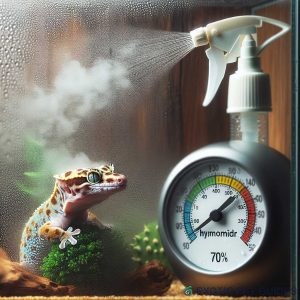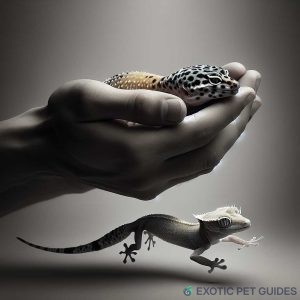📝 Introduction
Geckos are among the most beginner-friendly reptiles, but even first-time keepers can make simple mistakes that affect their pet’s health and happiness. Whether you’ve chosen a leopard gecko or crested gecko, this guide will walk you through five common errors — and how to avoid them like a pro.

❌ Mistake 1: Using Loose Substrate (Sand, Soil, Bark)
Many pet stores still recommend sand or coconut fiber for geckos, but these materials can cause impaction — a dangerous condition where your gecko can’t pass food due to substrate ingestion.
✅ What to Use Instead:
- Reptile carpet
- Paper towel (for babies or quarantine)
- Slate tile
❌ Mistake 2: Incorrect Heating or Lighting
Geckos are cold-blooded. Without the right temperature gradient, they can’t digest food or stay healthy.
🔥 For Leopard Geckos:
- Under-tank heating pad + thermostat
- Warm side: ~88–92°F, Cool side: ~75°F
💧 For Crested Geckos:
- Room temp 70–78°F is enough
- Avoid strong heat lamps
❌ Mistake 3: Poor Humidity Control
Crested geckos need high humidity (50–80%). Leopard geckos need a moist hide, not a humid tank.
💡 Tips:
- Mist crested gecko tank twice daily
- Use hygrometers to monitor levels
- Create a moist hide for leopard geckos using a plastic container + moss
❌ Mistake 4: Infrequent or Incomplete Feeding
Feeding geckos “whenever” isn’t enough. You need a feeding schedule, proper insects, and supplements.
🦗 Leopard Gecko Diet:
- Live crickets, mealworms, dubia roaches
- Calcium + D3 every other feeding
🍓 Crested Gecko Diet:
- Repashy or Pangea powder diet
- Optional: insects 1–2x per week
❌ Mistake 5: Handling Too Soon or Too Much
Geckos need time to settle in after arriving at a new home. Handling too early can cause stress or tail dropping.
🕒 Wait at least 1 week before handling
✋ Limit handling to 5–10 minutes at a time
🧘 Use slow, gentle movements
✅ Summary Table: Mistake → Correction
| Mistake | Correct Practice |
|---|---|
| Loose substrate | Reptile carpet, tile, or paper towel |
| Wrong heat/humidity | Thermostat, misting, proper hides |
| Inconsistent feeding | Scheduled feeding with supplements |
| Overhandling | Wait a week, short sessions, gentle touch |
| Ignoring humidity (crested) | Regular misting, monitor hygrometer |
🧠 Final Thoughts
Being a great gecko keeper isn’t about perfection—it’s about learning and improving. By avoiding these common beginner mistakes, you’ll create a safe, happy, and healthy environment your gecko will thrive in.
Want more tips? Check out our Gecko Care Guides or explore the best gecko tank setups for each species!


